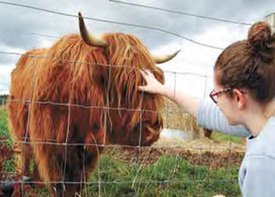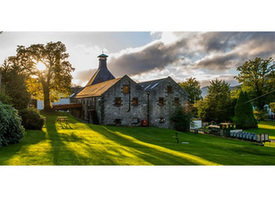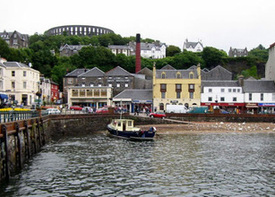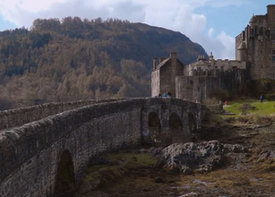Highlands Tourism Info
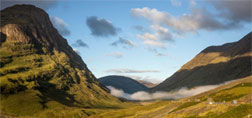 The vast Highlands of Scotland are one of Western Europe's last great wildernesses. Just as you imagine or have seen in movies like The Highlander, the mountainous scenery is breathtaking with a dramatic coastline. The Highlands are the largest of the 32 council areas in Scotland, merging the former counties of Ross and Cromarty, all of Sutherland, Caithness and Nairnshire, and parts of Argyll and Moray. Although the Scottish highlands do stretch further south this area is governed by the Highland Council.
The vast Highlands of Scotland are one of Western Europe's last great wildernesses. Just as you imagine or have seen in movies like The Highlander, the mountainous scenery is breathtaking with a dramatic coastline. The Highlands are the largest of the 32 council areas in Scotland, merging the former counties of Ross and Cromarty, all of Sutherland, Caithness and Nairnshire, and parts of Argyll and Moray. Although the Scottish highlands do stretch further south this area is governed by the Highland Council.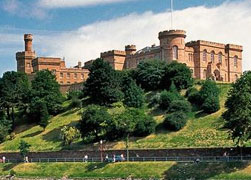 Inverness is known as the capital of the highlands and is the largest city in the area. Sitting on the mouth of the River Ness at the tip of the Great Glen it has for a long time been the key gateway to the northern Highlands. The city was built on an old settlement of the Pictish Kingdom. The city now has a vibrant centre offering a variety of great accommodations, shopping, restaurants, and evening entertainment with traditional Scottish music. You can also visit the 18th century Inverness Castle and Castle Garrison Encounter. The Inverness Museum and Art Gallery displays the heritage of the area, from archaeology to natural history.
Inverness is known as the capital of the highlands and is the largest city in the area. Sitting on the mouth of the River Ness at the tip of the Great Glen it has for a long time been the key gateway to the northern Highlands. The city was built on an old settlement of the Pictish Kingdom. The city now has a vibrant centre offering a variety of great accommodations, shopping, restaurants, and evening entertainment with traditional Scottish music. You can also visit the 18th century Inverness Castle and Castle Garrison Encounter. The Inverness Museum and Art Gallery displays the heritage of the area, from archaeology to natural history.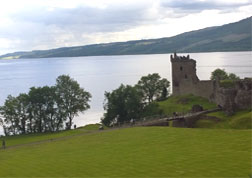 Following the Great Glen Way is Loch Ness, perhaps the most famous tourist attraction in Scotland, widely known for its monster affectionately named Nessie. In Drumnadrochit is the Loch Ness Centre Exhibition and the Original Loch Ness Monster Visitors Centre, displaying examples and photographs of the sightings over the years. The museums also offers a wide-range of souvenirs to take home in the gift shop. Not far south is Urquhart Castle, a castle of great importance to the Scots. Because of its position it has been the focus of many conflicts. Although now in ruins it has spectacular view of the loch, especially from the town which was once 5 stories tall. A Jacobite cruise is an ideal way to experience Loch Ness.
Following the Great Glen Way is Loch Ness, perhaps the most famous tourist attraction in Scotland, widely known for its monster affectionately named Nessie. In Drumnadrochit is the Loch Ness Centre Exhibition and the Original Loch Ness Monster Visitors Centre, displaying examples and photographs of the sightings over the years. The museums also offers a wide-range of souvenirs to take home in the gift shop. Not far south is Urquhart Castle, a castle of great importance to the Scots. Because of its position it has been the focus of many conflicts. Although now in ruins it has spectacular view of the loch, especially from the town which was once 5 stories tall. A Jacobite cruise is an ideal way to experience Loch Ness.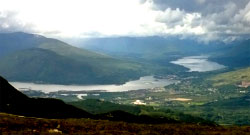 The Great Glen stretches from coast to coast created by a coast line. It consists of 5 lochs and 3 rivers; River Ness, Loch Dochfour, Loch Ness, River Oich, Loch Oich, Loch Lochy, River Lochy, and Loch Linnhe. The Great Glen has some one of the most beautiful views in Scotland. The Great Glen Way is a 73 mile long trail running from Fort William to Inverness. A popular walk opened in 2002, it is suitable for all levels of experience from low to high level tracks. It can be walked within 5 to 6 days, staying overnight in the various towns along the way. You will also pass by the Caledonian Canal, running 60 miles long connecting Loch Lochy, Loch Oich and Loch Ness with a serious of 29 locks creating a through passage for ships.
The Great Glen stretches from coast to coast created by a coast line. It consists of 5 lochs and 3 rivers; River Ness, Loch Dochfour, Loch Ness, River Oich, Loch Oich, Loch Lochy, River Lochy, and Loch Linnhe. The Great Glen has some one of the most beautiful views in Scotland. The Great Glen Way is a 73 mile long trail running from Fort William to Inverness. A popular walk opened in 2002, it is suitable for all levels of experience from low to high level tracks. It can be walked within 5 to 6 days, staying overnight in the various towns along the way. You will also pass by the Caledonian Canal, running 60 miles long connecting Loch Lochy, Loch Oich and Loch Ness with a serious of 29 locks creating a through passage for ships.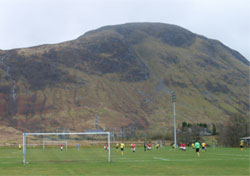 When travelling to the Highlands you will most likely end up at Fort William. A big stop for adventure tourists as it is the town to the famous Ben Nevis mountain, the tallest mountain in Britain (4406ft tall). Walkers come here from all over the world to hike Ben Nevis as it is the most popular hike in the UK. The views from the top are amazing. In the town of Fort William has many shops with hiking and climbing equipment to start your journey. It is also the start and end point to 2 long trails in Scotland; the West Highland Way and the Great Glen Way. The West Highland Museum in the main square has a unique exhibition of Bonnie Prince Charlie and the Jacobites, they occupied the town during the uprising. The Ben Nevis Distillery also has a Visitor Centre marking the entrance to Glen Nevis.
When travelling to the Highlands you will most likely end up at Fort William. A big stop for adventure tourists as it is the town to the famous Ben Nevis mountain, the tallest mountain in Britain (4406ft tall). Walkers come here from all over the world to hike Ben Nevis as it is the most popular hike in the UK. The views from the top are amazing. In the town of Fort William has many shops with hiking and climbing equipment to start your journey. It is also the start and end point to 2 long trails in Scotland; the West Highland Way and the Great Glen Way. The West Highland Museum in the main square has a unique exhibition of Bonnie Prince Charlie and the Jacobites, they occupied the town during the uprising. The Ben Nevis Distillery also has a Visitor Centre marking the entrance to Glen Nevis.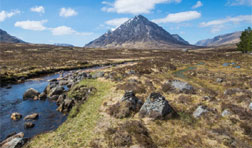 Glen Coe is another mountain valley with spectacular dramatic views but this one has a bloody history. For about 200 years the Clan Campbell had many conflicts with their rival Clan Macdonald. The Clan Macdonald were synonymously known as cattle robbers and deeply disliked by the Campbells. The best known event that took place here in 1692, 13th of February at 5am, called the Massacre of Glencoe.
Glen Coe is another mountain valley with spectacular dramatic views but this one has a bloody history. For about 200 years the Clan Campbell had many conflicts with their rival Clan Macdonald. The Clan Macdonald were synonymously known as cattle robbers and deeply disliked by the Campbells. The best known event that took place here in 1692, 13th of February at 5am, called the Massacre of Glencoe.
Glencoe village is on the western edge of the Glen. The area has many opportunities for hill walkers and climbers. The Glencoe Visitor Centre offers details on the areas natural and cultural heritage.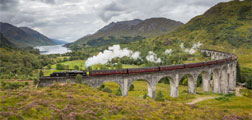 The road to Skye is a very scenic route with a few chance to stop and visit some local attractions. In the summer you can take a ride on the Jacobite steam train which runs from Fort William to Mallaig. The line crosses Glenfinnan where stands a monument in the memory of Bonnie Price Charlie. The Visitor Centre tells the story of his adventures and attributes during the Jacobite uprising. Facing Loch Shiel it is another picturesque setting. The Glenfinnan Viaduct was featured in the 'Harry Potter and the Chamber of Secrets' movie as the the Hogwarts Express crossed it.
The road to Skye is a very scenic route with a few chance to stop and visit some local attractions. In the summer you can take a ride on the Jacobite steam train which runs from Fort William to Mallaig. The line crosses Glenfinnan where stands a monument in the memory of Bonnie Price Charlie. The Visitor Centre tells the story of his adventures and attributes during the Jacobite uprising. Facing Loch Shiel it is another picturesque setting. The Glenfinnan Viaduct was featured in the 'Harry Potter and the Chamber of Secrets' movie as the the Hogwarts Express crossed it.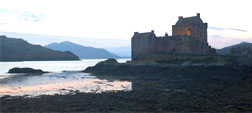 Glen Shiel is a rugged mountainous region with steep ridges favoured by many experienced hill walkers. The Five Sisters of Kintail sit on the northside, an 8 km long ridge reaching a height of 3,501 ft. At the mouth of Loch Duich is Eilean Donan Castle, one of the most photographed castles in Scotland and a true Scottish icon. Situated on an island at the point where three great sea lochs meet, and surrounded by some majestic mountain scenery. The castle dates back to the 1200s, it was partially destroyed during the Jacobite uprising in 1719, and restored from 1913 to 1932, and now has a visitor centre.
Glen Shiel is a rugged mountainous region with steep ridges favoured by many experienced hill walkers. The Five Sisters of Kintail sit on the northside, an 8 km long ridge reaching a height of 3,501 ft. At the mouth of Loch Duich is Eilean Donan Castle, one of the most photographed castles in Scotland and a true Scottish icon. Situated on an island at the point where three great sea lochs meet, and surrounded by some majestic mountain scenery. The castle dates back to the 1200s, it was partially destroyed during the Jacobite uprising in 1719, and restored from 1913 to 1932, and now has a visitor centre.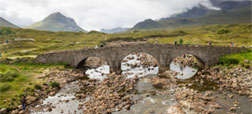 From Lochalsh is where you take the bridge over the sea to Skye. The bridge was built in 1995 where as before the main access was by ferry (which still runs). The romantic Isle of Skye has become famous ever since the writing of Sir Walter Scott. Surrounded by a beautiful coastline and the skyline is dominated by the Cuillin Hills. The Cullin hills are the highest places on the island and suggest for experienced hikers. The views from the top are among the greatest in Britain. Dunvegan Castle is the most famous on the island, it is the stronghold of the Clan MacLeod dating back to the 14th century. Visitors are welcome to explore the public rooms in the castle, the famous Fairy Flag said to have given them magical powers in battle, and wander the castle's extensive wooded grounds. Portree is the main town on Skye,
From Lochalsh is where you take the bridge over the sea to Skye. The bridge was built in 1995 where as before the main access was by ferry (which still runs). The romantic Isle of Skye has become famous ever since the writing of Sir Walter Scott. Surrounded by a beautiful coastline and the skyline is dominated by the Cuillin Hills. The Cullin hills are the highest places on the island and suggest for experienced hikers. The views from the top are among the greatest in Britain. Dunvegan Castle is the most famous on the island, it is the stronghold of the Clan MacLeod dating back to the 14th century. Visitors are welcome to explore the public rooms in the castle, the famous Fairy Flag said to have given them magical powers in battle, and wander the castle's extensive wooded grounds. Portree is the main town on Skye,  set round a natural harbour, it has much to offer for tourists including range of accommodations. Just north of Potree is the Trotternish Ridge with its strange cliff formations creating unique landscape, such as the Old Man of Storr, Kilt Rock, and the Quiraing Needle Rock. Along the coast as well is Duntulm Castle, and the Skye Museum of Island exhibiting a village with cottages how it was in the 18th century. Towards the southern end of Skye in Sleat are Armadale Castle, and the Museum of the Isles with 6 galleries taking you through 1500 years of the history and culture of the area once known as the Kingdom of the Isles. The Isle of Skye is an amazing place and a must to include on your itinerary when touring Scotland.
set round a natural harbour, it has much to offer for tourists including range of accommodations. Just north of Potree is the Trotternish Ridge with its strange cliff formations creating unique landscape, such as the Old Man of Storr, Kilt Rock, and the Quiraing Needle Rock. Along the coast as well is Duntulm Castle, and the Skye Museum of Island exhibiting a village with cottages how it was in the 18th century. Towards the southern end of Skye in Sleat are Armadale Castle, and the Museum of the Isles with 6 galleries taking you through 1500 years of the history and culture of the area once known as the Kingdom of the Isles. The Isle of Skye is an amazing place and a must to include on your itinerary when touring Scotland.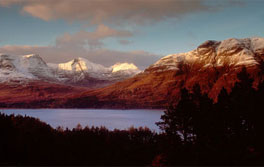 The Northern Highlands, one of the last great wildernesses in Britain. A vast region that is sparsely populated with an abundance of nature and a unspoiled landscape that will take your breath away. The regions background is based on Pictish, Viking and Gaelic settlers spanning over 5000 years of history. Around the highlands there are many visitors centres that exhibit all these cultures as well as artefacts of early human life. The western region is surrounding the town of Ullapool, the main fishing port on the west and the ferry terminal to reach the Outer Heberdies. The area namely is Wester Ross which has some of the most remote and wild landscapes. North is the old county of Sutherland, which covers the 3 coasts. These areas have been declared the North West Highlands Geopark; the most sparsely populated corner of Europe, where the eagles and peregrines soar. On the coasts there are many opportunities for whale and dolphin watching cruises. Guided walks, bird watching tours and other activities are offered in the Spring, Summer and Autumn season led by the local Rangers. The main villages of the park are Achiltibuie, Lochinver, Kinlochbervie, Scourie and Durness. Visit the Northwest Highlands Geopark website for more information.
The Northern Highlands, one of the last great wildernesses in Britain. A vast region that is sparsely populated with an abundance of nature and a unspoiled landscape that will take your breath away. The regions background is based on Pictish, Viking and Gaelic settlers spanning over 5000 years of history. Around the highlands there are many visitors centres that exhibit all these cultures as well as artefacts of early human life. The western region is surrounding the town of Ullapool, the main fishing port on the west and the ferry terminal to reach the Outer Heberdies. The area namely is Wester Ross which has some of the most remote and wild landscapes. North is the old county of Sutherland, which covers the 3 coasts. These areas have been declared the North West Highlands Geopark; the most sparsely populated corner of Europe, where the eagles and peregrines soar. On the coasts there are many opportunities for whale and dolphin watching cruises. Guided walks, bird watching tours and other activities are offered in the Spring, Summer and Autumn season led by the local Rangers. The main villages of the park are Achiltibuie, Lochinver, Kinlochbervie, Scourie and Durness. Visit the Northwest Highlands Geopark website for more information.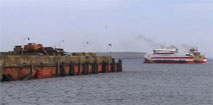 On the most northerly tip of the Highlands and of the British mainland is John O'Groats. A popular spot for tourists as it is the last stop on the longest walk in Britain, approx 874 miles from Land's End in Cornwall. From the coast it is possible to see the Orkney Islands and there are ferry services that take you across. Arctic sea life is especially abundant here so you must take the opportunity for a cruise of the area, most notably are the Puffins.
On the most northerly tip of the Highlands and of the British mainland is John O'Groats. A popular spot for tourists as it is the last stop on the longest walk in Britain, approx 874 miles from Land's End in Cornwall. From the coast it is possible to see the Orkney Islands and there are ferry services that take you across. Arctic sea life is especially abundant here so you must take the opportunity for a cruise of the area, most notably are the Puffins.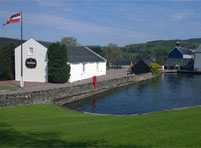 Moray is the historic region in north east Scotland between Inverness and Banff. The area is widely know as Speyside and synonymous for its whisky. Speyside is home to about half of Scotland's producing distilleries. Most famously are the ones on the Malt Whisky Trail; Benromach, Cardhu, Dallas Dhu Historic Distillery, Glenfiddich, Glen Grant, The Glenlivet, Glen Moray, Strathisla, and Speyside Cooperage. Because of the richness of the land and the flowing streams this gives the whiskies here a unique taste. During the Act of Union in the 17th century most distilleries had to go in hiding and operate underground which many did in Moray. Most of these distilleries now have visitors centre where you can see the traditional way of making whiskey and sample a wee dram.
Moray is the historic region in north east Scotland between Inverness and Banff. The area is widely know as Speyside and synonymous for its whisky. Speyside is home to about half of Scotland's producing distilleries. Most famously are the ones on the Malt Whisky Trail; Benromach, Cardhu, Dallas Dhu Historic Distillery, Glenfiddich, Glen Grant, The Glenlivet, Glen Moray, Strathisla, and Speyside Cooperage. Because of the richness of the land and the flowing streams this gives the whiskies here a unique taste. During the Act of Union in the 17th century most distilleries had to go in hiding and operate underground which many did in Moray. Most of these distilleries now have visitors centre where you can see the traditional way of making whiskey and sample a wee dram.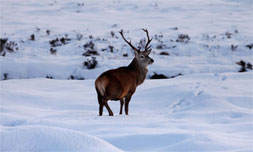 Aviemore is the largest ski resort in Britain and the centre of the Cairngorms National Park. The mountains in the park are the largest area in the UK of tundra-type habitat, with 5 summits over 4000ft. Walking is very popular around this area with marked trails for all levels. Go to the Cairngorms National Park official website for more details.
Aviemore is the largest ski resort in Britain and the centre of the Cairngorms National Park. The mountains in the park are the largest area in the UK of tundra-type habitat, with 5 summits over 4000ft. Walking is very popular around this area with marked trails for all levels. Go to the Cairngorms National Park official website for more details.
The highlands offer a wide range of outdoor activities and sightseeing. For more details order a visitors guide brochure.
Photo Credits: 1,2,6,7,9,10,11 PaulTomkins/VisitScotland, 3,4,8,12,13,14 morourke, 5 TomBrogan

